
Trinity College is a constituent college of the University of Cambridge. The college was founded in 1546 by King Henry VIII. Trinity is one of the oldest and largest colleges in Cambridge, with the largest financial endowment of any college at either Cambridge or Oxford. Trinity has some of the most distinctive architecture within Cambridge, with its Great Court reputed to be the largest enclosed courtyard in Europe. Academically, Trinity performs exceptionally as measured by the Tompkins Table, coming in first from 2011 to 2017, with 42.5% of undergraduates obtaining a first class result in 2019.

Peterhouse is the oldest constituent college of the University of Cambridge in England, founded in 1284 by Hugh de Balsham, Bishop of Ely. Today, Peterhouse has 254 undergraduates, 116 full-time graduate students and 54 fellows. It is quite often erroneously referred to as Peterhouse College, although the correct name is simply Peterhouse.

Downing College is a constituent college of the University of Cambridge and currently has around 650 students. Founded in 1800, it was the only college to be added to Cambridge University between 1596 and 1869, and is often described as the oldest of the new colleges and the newest of the old. Downing College was formed "for the encouragement of the study of Law and Medicine and of the cognate subjects of Moral and Natural Science", and has developed a reputation amongst Cambridge colleges for Law and Medicine.

St John's College is a constituent college of the University of Cambridge founded by the Tudor matriarch Lady Margaret Beaufort. In constitutional terms, the college is a charitable corporation established by a charter dated 9 April 1511. The aims of the college, as specified by its statutes, are the promotion of education, religion, learning and research. It is one of the larger Oxbridge colleges in terms of student numbers. For 2018, St. John's was ranked 9th of 29 colleges in the Tompkins Table with over 30 per cent of its students earning first-class honours.

Clare College is a constituent college of the University of Cambridge in Cambridge, England. The college was founded in 1326 as University Hall, making it the second-oldest surviving college of the University after Peterhouse. It was refounded in 1338 as Clare Hall by an endowment from Elizabeth de Clare, and took on its current name in 1856. Clare is famous for its chapel choir and for its gardens on "The Backs".
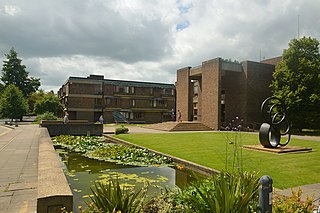
Churchill College is a constituent college of the University of Cambridge, England. It has a primary focus on science, engineering and technology, but still retains a strong interest in the arts and humanities.

Alain de Botton is a Swiss-born British philosopher and author. His books discuss various contemporary subjects and themes, emphasizing philosophy's relevance to everyday life. He published Essays in Love (1993), which went on to sell two million copies. Other bestsellers include How Proust Can Change Your Life (1997), Status Anxiety (2004) and The Architecture of Happiness (2006).

Zadie Adeline Smith FRSL is an English novelist, essayist, and short-story writer. Her debut novel, White Teeth (2000), immediately became a best-seller and won a number of awards. She has been a tenured professor in the Creative Writing faculty of New York University since September 2010.

Peter Zumthor is a Swiss architect whose work is frequently described as uncompromising and minimalist. Though managing a relatively small firm, he is the winner of the 2009 Pritzker Prize and 2013 RIBA Royal Gold Medal.

Sir Thomas Graham Jackson, 1st Baronet was one of the most distinguished British architects of his generation. He is best remembered for his work at Oxford, including the Oxford Military College at Cowley, the university's Examination Schools, most of Hertford College, much of Brasenose College, ranges at Trinity College and Somerville College, the City of Oxford High School for Boys, and the Acland Nursing Home.
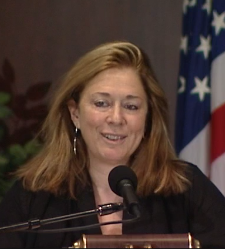
Jorie Graham is an American poet. The Poetry Foundation called Graham "one of the most celebrated poets of the American post-war generation." She replaced poet Seamus Heaney as Boylston Professor of Rhetoric and Oratory at Harvard, becoming the first woman to be appointed to this position. She won the Pulitzer Prize for Poetry (1996) for The Dream of the Unified Field: Selected Poems 1974-1994 and was chancellor of the Academy of American Poets from 1997 to 2003. She won the 2013 International Nonino Prize in Italy.
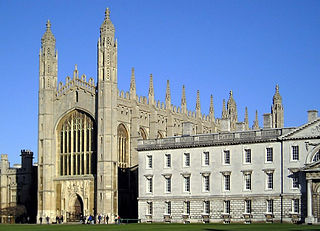
King's College Chapel is the chapel of King's College in the University of Cambridge. It is considered one of the finest examples of late Perpendicular Gothic English architecture and features the world's largest fan vault. The Chapel was built in phases by a succession of kings of England from 1446 to 1515, a period which spanned the Wars of the Roses and three subsequent decades. The Chapel's large stained glass windows were completed by 1531, and its early Renaissance rood screen was erected in 1532–36. The Chapel is an active house of worship, and home of the King's College Choir. It is a landmark and a commonly used symbol of the city of Cambridge.

The bibliography of Charles, Prince of Wales, is a list of approximately three dozen works which the Prince has authored, co-authored, illustrated or narrated, and includes works for which he has written a foreword, introduction or preface.
Philip Mansel is a historian of courts and cities, and the author of a number of books about the history of France and the Ottoman Empire. He was born in London in 1951 and educated at Eton College, Balliol College, Oxford, and obtained a doctorate at University College London in 1978. He has lived in Paris, Istanbul and Beirut and now lives in London.
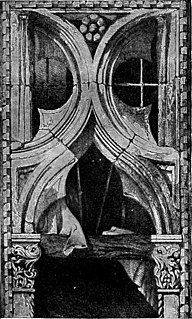
The Seven Lamps of Architecture is an extended essay, first published in May 1849 and written by the English art critic and theorist John Ruskin. The 'lamps' of the title are Ruskin's principles of architecture, which he later enlarged upon in the three-volume The Stones of Venice. To an extent, they codified some of the contemporary thinking behind the Gothic Revival. At the time of its publication, A. W. N. Pugin and others had already advanced the ideas of the Revival and it was well under way in practice. Ruskin offered little new to the debate, but the book helped to capture and summarise the thoughts of the movement. The Seven Lamps also proved a great popular success, and received the approval of the ecclesiologists typified by the Cambridge Camden Society, who criticised in their publication The Ecclesiologist lapses committed by modern architects in ecclesiastical commissions.
Alexander Michael Mennim was a York-based British architect and author with a particular interest in historical buildings.
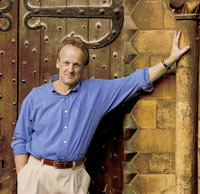
Tim Rawle is an English architectural photographer and writer. He is best known for his photographs of buildings in Cambridge, England.
Kerry John Downes was an English architectural historian whose speciality was English Baroque architecture. He was Professor of History of Art, University of Reading, 1978–91, then Emeritus.
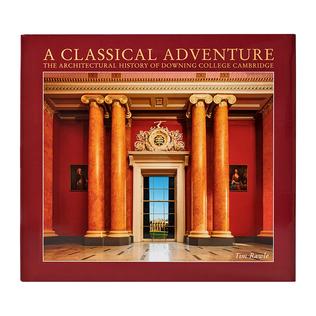
A Classical Adventure: The Architectural History of Downing College, Cambridge is Tim Rawle's introduction to the architectural history of Downing College, Cambridge with photographs of the college buildings by Rawle and Louis Sinclair.
Deborah Janet Howard, is a British art historian and academic. Her principal research interests are the art and architecture of Venice and the Veneto; the relationship between Italy and the Eastern Mediterranean, and music and architecture in the Renaissance. She is Professor Emerita of Architectural History in the Faculty of Architecture and History of Art, University of Cambridge and a Fellow of St John's College, Cambridge.
















